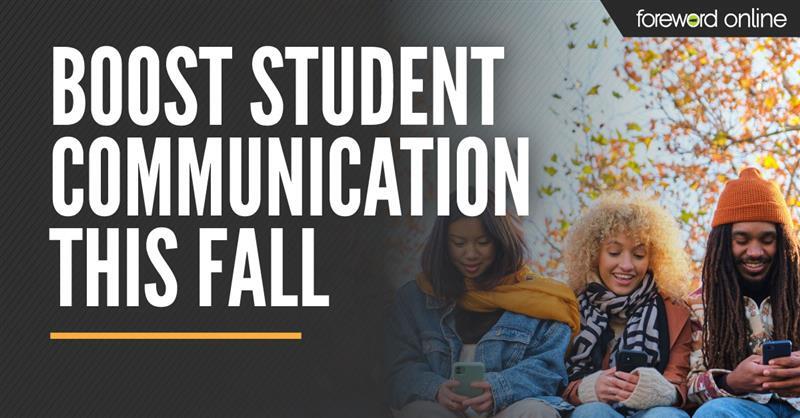Social media is a fantastic tool for college stores. It helps you connect with students, alumni and parents in a consistent and meaningful way. However, developing a great social media presence requires strategy and fair amount of patience. Find out how the GVSU Laker Store has turned their social media efforts into a valuable store resource.

The GVSU Laker Store at Grand Valley University has built their Instagram followers to nearly 5,000 students. Recently, we sat down with Auxiliary Services Marketing Manager Liza Guikema to discuss how the store uses social media to engage students and expand their alumni, parent and fan reach.
Tell me about your store’s social media efforts.
Our marketing department consists of myself and a few student employees, including a student photographer, student graphic designer and marketing intern who help manage the store’s social media efforts.
Our strategy is to be where the students are and share information that’s both informative and entertaining. We are on Facebook, Twitter and Instagram right now. We have been on each platform for about six years. Social media isn’t our only communication channel. We also do things like traditional advertising and emails, but social media is one of the most effective channels for reaching our audience. Students come into the store because they heard about something on social media, and they engage with us through those channels as well.
Instagram is probably our most popular channel. It doesn’t have the most followers, but we consistently see the most student engagement there via likes, comments and messages.
Does your audience change depending on the platform?
Yeah, absolutely. Our Instagram page is primarily followed by students. It’s a younger audience and mostly female. Our school has a higher female population, so that is pretty consistent. With Facebook we see students, but we also see parents and alumni there. We get a lot of instances where we post something on Facebook, and then a parent will tag a student in the post, saying things like, “Hey, check out what the bookstore posted.”
We try to be more formal and informative on Facebook. We share when to buy books, when to sell back books, deadlines for financial aid, etc. We know that parents are sometimes the ones to motivate students to get things done, so it helps that they are aware of the deadlines.
With Twitter, we also have a younger audience. There, things like humor, memes, GIFs and more casual posts do well.
I noticed you feature student models on social media. How did that come about and how do you recruit students to model your merchandise?
That's a wrap, Lakers! You made it through another semester at #GVSU. pic.twitter.com/5vDHsfAjYV
— GVSU Laker Store (@GVSU_LakerStore) April 26, 2019
We actually have a lot of student employees in our store which is nice because we don’t have to go far to find models. We will pull the schedules from each department when we need new images or have new products. We ask the students if they are willing to model for our social media pages. If they are willing, we check with their managers to see if they are busy or if they could spare 20 minutes or so.
For the most part, the student employees really love doing it, so we don’t have to reach out to anyone else. From time to time, we will get students who send us messages that say, “Hey, I’d really love to be a model for you.” We let them know it is a volunteer gig. Usually, they’re willing to come in for a photo shoot.
It’s a really great experience for our student photographer, designer and marketing intern. It gives the photographer a chance to practice directing photo shoots and interacting with people, and it gives the designer and marketing intern experience with social media marketing. So, it’s a good way for students to practice what they are studying.
What kind social media posts have the best results?
That is pretty specific to the site. On Instagram, things that are really trendy or visually appealing do best. Recently, we shared posts that featured Swell water bottles and a cute new ceramic mug and those were both popular. If anything is a hot campus trend, we try to share it on Instagram. We also found that nostalgic posts or posts that spark campus pride do well. For example, we might post a picture of a cool campus landmark or a photograph that celebrates graduation or welcomes students back for the fall semester. Posts like that get good engagement, too.
For Facebook, we stick with more informative posts. We host Facebook events if we are doing anything in the store to help spread the word. Those work pretty well. We also make announcements when we have new items.
With Twitter, humor is what does the best. We really struggle to get engagement on Twitter, but when we post something humorous or inspirational, we see better engagement. I think students really expect authenticity on Twitter. They don’t want to see advertisements there. So, we try to find those off-the-cuff moments, but they can be hard to come by.
We try to spread the word to all the store staff that we want to know anything fun that is happening in the store. Like if there is a cute puppy in the store or if somebody stops in and has a really cool story about something they accomplished, we want to know so we can share it. Part of our effort is trying to get other key members to alert us to those moments.
Do you share videos?
Yes. We don’t do a ton of them because of time constraints, but we like to do them. Videos perform well. Usually, our videos are for our Instagram story. We are trying to do more short videos that we can put in our Instagram or Facebook feed. It’s a matter of changing our mindset so everything isn’t always a still photo.
What advice would you give a college store that wants to grow its followers?
I have a few things. First, you need to know your audience and where they are. You don’t have to be everywhere. For example, we used to be on Snapchat, but it just wasn’t doing anything for us. Students were there, but they didn’t want to talk to us there.
Second, you need to know when students are on these sites. Use the tools Facebook, Instagram and Twitter provide. They all share analytics that will show you who your audience is and when they are on the site. For us, noon and 9 p.m. are the best time to post because that’s when our audience is most active on social media.
We also do monthly reports on each of our social media channels. It just takes one of my student employees about 20 minutes to compile everything. We track our followers and engagement for the month. We note which posts were the most popular on each site. We can look back at previous months and see what did really well. We start from there when we’re building future content.
Third, do fun stuff that you know will create excitement among your followers. Hosting a contest is always a great way to spark engagement. It doesn’t have to be expensive. We can give away an inexpensive t-shirt or new water bottle, and we’ll get new followers. Small things like that can really help.
Lastly, look to your student employees for feedback on what’s trendy, humorous, etc. They’re the experts regarding what’s popular among their peers, so rely on them for insight and ideas.





